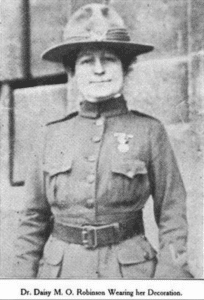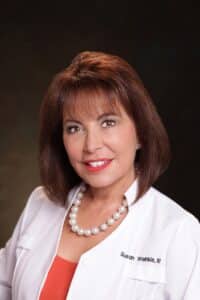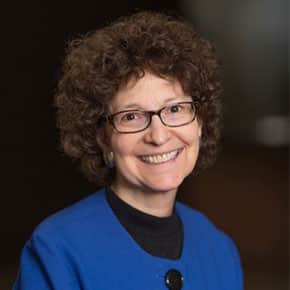Although today the skincare industry is predominantly run by women, this has not always been the case. Similar to the large disparities once seen in medicine in general, the dermatologic field was also historically heavily dominated by men. But women have since come a long way in the dermatologic world, overcoming challenges, making their mark, and fulfilling life-long dreams, until they finally bridged the gender gap, outnumbering their male counterparts in this specialized field of medicine.
History of Women in Dermatology
A quick search of historical female figures in dermatology reveals three influential names: Rose Hirschler, Daisy Maude Orleman Robinson, and Loretta Joy Cummins. All of these prominent females can be given credit for kick-starting early female interest and involvement in dermatology.
Daisy Maude Orleman Robinson (1868-1942)

Daisy Orleman Robinson is credited as the first female American dermatologist. Earning her medical degree at the National Medical College of Columbian University (now the George Washington University) in 1890, she later went on to practice dermatology alongside her husband at the New York Polyclinic. The two also maintained their own dermatology practice. Among her many achievements, Daisy Orleman Robinson is also the first woman dermatologist to present a case at a dermatologic meeting.
Loretta Joy Cummins (1883-1958)
Loretta Joy Cummins was the first woman to pass the dermatology board exams and to be the president of the New England Dermatological Society. She graduated from Tufts Medical School in 1903, then went on to become the first woman staff physician at the Massachusetts General Hospital where she was hired as an assistant in dermatology. In 1928 was appointed the first female dermatologist in Boston.
Rose Hirschler (1875-1940)
The first female medical dermatologist to graduate in the United States in 1921 was Rose Hirschler. A certified masseuse, Hirschler’s interest in the dermatology field led her to enroll in the first medical school established for women, the Women’s Medical College in Pennsylvania (WMCP). After graduating, she traveled to Europe where she studied dermatology before returning to Philadelphia to work with the influential dermatologist, Jay F. Schamberg. She began teaching at WMCP in 1900 and in 1936 was appointed Professor of Dermatology, the first woman to hold such a position. Hirschler, a diplomat of the American Board of Dermatology, was the second woman to be certified in dermatology in America, after Loretta Joy Cummins.
The Women’s Dermatology Society
The Women’s Dermatology Society (WDS) was founded in 1973 by Wilma F. Bergfeld, MD. The then chief of dermatology at the University of Pennsylvania, Walter Shelley, MD, remarked there was little participation from women at the American Academy of Dermatology (AAD) meetings and subsequently, Dr. Bergfeld set up the WDS alongside Dr. Shelley and a group of female dermatologists. The WDS is dedicated to helping dermatologists fulfill their greatest potential and assisting them in contributing to the dermatology specialty and society.
Dr. Bergfeld, who encountered her own gender-biased challenges earlier in her career, has since gone on to serve as the first woman president of the AAD. The challenges she faced only served to solidify her goals, driving her to work harder.
The Rose Hirschler Award
This annual award by the WDS in honor of Rose Hirschler is presented to physicians who have made significant contributions to medicine and dermatology, and in so doing have served to enhance the role of women in dermatology. Since 1988, this prestigious award has been presented to both male and female dermatologists, including a few of our own expert LiVDerm faculty.
LiVDerm Faculty Rose Hirschler Award Recipients
Dr. Weinkle is a diplomat of the American Board of Dermatology and a fellow of the American College of Mohs Surgery. She is also an assistant clinical professor of dermatology at the University of South Florida where she shares her passion with her students. Dr. Weinkle is a mentor, scientific innovator, clinician, and researcher, working to build enduring relationships within the dermatology community.
Dr. Paller is the Walter J. Hamlin Professor and Chair of the Department of Dermatology and Professor of Pediatrics at Northwestern University’s Feinberg School of Medicine. She is also the director of the Skin Biology and Diseases Resource-Based Center. She has authored over 600 peer-reviewed publications and in 2022 was announced winner of the Tripartite Legacy Faculty Prize in Translational Science and Education.
Dr. Grimes is the director of the Vitiligo and Pigmentation Institute of Southern California and the Grimes Institute for Medical and Aesthetic Dermatology. She is a passionate dermatologist and researcher and also serves as a clinical professor of dermatology at the David Geffen School of Medicine at the University of California.
Dr. McMichael is Professor of Dermatology and Chair of the Department of Dermatology at Wake Forest School of Medicine. Her clinical and research interests include skin, hair, nail, and scalp disorders, as well as considerations for patients with skin of color. With over 100 articles in peer-reviewed journals, Dr. McMichael is a renowned authority in the field, solidifying her expertise and dedication to advancing dermatological research and patient care.
A Look at the Numbers
Over the last 50 years, the dermatology landscape has advanced a great deal, bringing breakthrough research and novel treatments. Additionally, more students are entering the profession, and more specifically, a larger proportion of these are female. According to the American Medical Association (AMA), there were 4,004 dermatologists in the U.S. in 1970. But by 2019, this figure had risen to 19,957.
In their 2021 report of Active Physicians by Sex and Specialty, the Association of American Medical Colleges reported 6,091 (47.8%) male dermatologists and 6,665 (52.2%) female dermatologists. Although the total number of dermatologists reported here is significantly lower than that of the AMA, it remains the case that female dermatologists have come to outnumber male dermatologists.
Closing the Gender Gap
Dermatology continues to be an attractive profession for both men and women for a variety of reasons. Aside from their love for their work, one of the most important is the degree of flexibility it affords. Unlike some other medical specialties, dermatologists are not tied down to a hospital setting and their clinic hours are typically normal weekday business hours, allowing for a better work-life balance. The numerous sub-specialties within the field and the higher compensation are further reasons why many opt to pursue a career in this field.
The gender gap in dermatology is much less than in some other medical specialties and even less than 50 years ago. The increased number of women entering the field of dermatology brings more opportunity for growth and diversity. Over the years, women have demonstrated their capabilities, strengths, and value in all areas, including their professional careers. The higher number of females in the dermatologic field has not only led to enriched perspectives but has also further motivated other women to pursue their professional and personal goals.
In a 2019 roundtable discussion, leading female dermatologist and LiVDerm’s South Beach Symposium Planning Committee Member, Doris J. Day, MD, stated:

“I would like to see women who are capable and who have the desire to lead feel they have the support they need to reach higher levels of leadership positions. Unfortunately, many women underestimate the power and value of their knowledge and expertise and they just 'give it away' without being properly recognized for their work and efforts. Women are naturally and organically rising in leadership ranks and my hope and expectation is that we will continue to take on greater roles at the top of companies.” - Dr. Doris Day
Key Takeaway
“To empower and connect women dermatologists through personal and professional development, mentorship, service and leadership”.
The above is the mission statement of the WDS and one which reflects the need for women to provide encouragement to one another and recognize the value that each holds.
This Women’s History Month, let your female mentors know how they have inspired and motivated you on your journey. Share your story with others and help empower them to set their own path to personal and professional growth and development.
- https://www.womensderm.org/
- França K, Ledon J, Savas J, Nouri K. Women in medicine and dermatology: history and advances. An Bras Dermatol. 2014 Jan-Feb;89(1):182-3. doi: 10.1590/abd1806-4841.20142435. PMID: 24626675; PMCID: PMC3938381
- https://www.mdedge.com/dermatology/article/226000/business-medicine/marked-improvements-seen-women-dermatology-1970s
- H08: She Rose to the top: Rose Hirschler (1875–1940), one of the world’s first female dermatologists, British Journal of Dermatology, Volume 187, Issue S1, 1 July 2022, Pages 187–188
- https://www.aamc.org/data-reports/workforce/interactive-data/active-physicians-sex-specialty-2021
- https://www.mdedge.com/dermatology/article/217367/business-medicine/50-years-growth-more-dermatologists-more-demand
- David M. Pariser, Daisy Maude Orleman Robinson: The first American woman dermatologist, Clinics in Dermatology, Volume 33, Issue 3, 2015, Pages 396-406, https://doi.org/10.1016/j.clindermatol.2014.10.018
- http://history.massgeneral.org/catalog/Detail.aspx?itemId=89&search
- https://practicaldermatology.com/articles/2019-jan/gender-equity-in-dermatology-are-we-there-yet
- Reid EE, James WD. The history of dermatology at the Woman’s Medical College of Pennsylvania. Int J Womens Dermatol. 2015 Apr 23;1(2):99-103. doi: 10.1016/j.ijwd.2015.03.003. PMID: 28491967; PMCID: PMC5418747
- https://news.feinberg.northwestern.edu/2022/09/13/paller-receives-2022-tripartite-award/




















